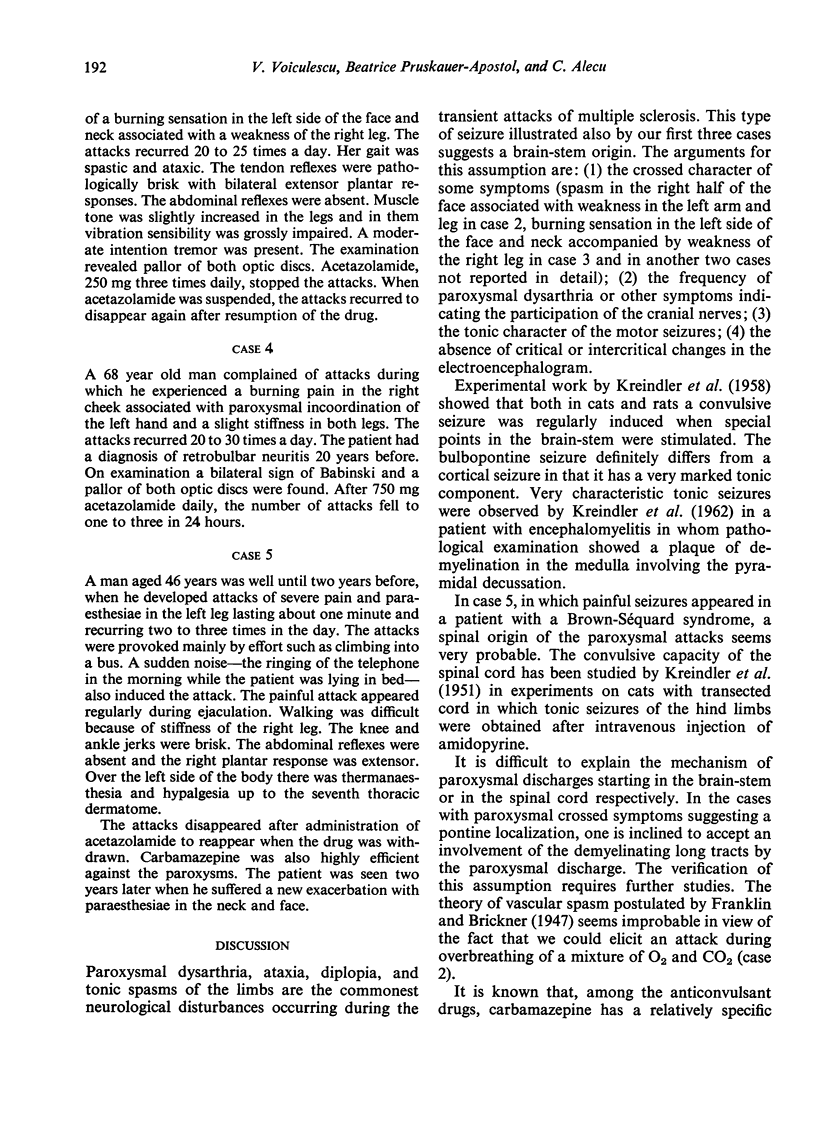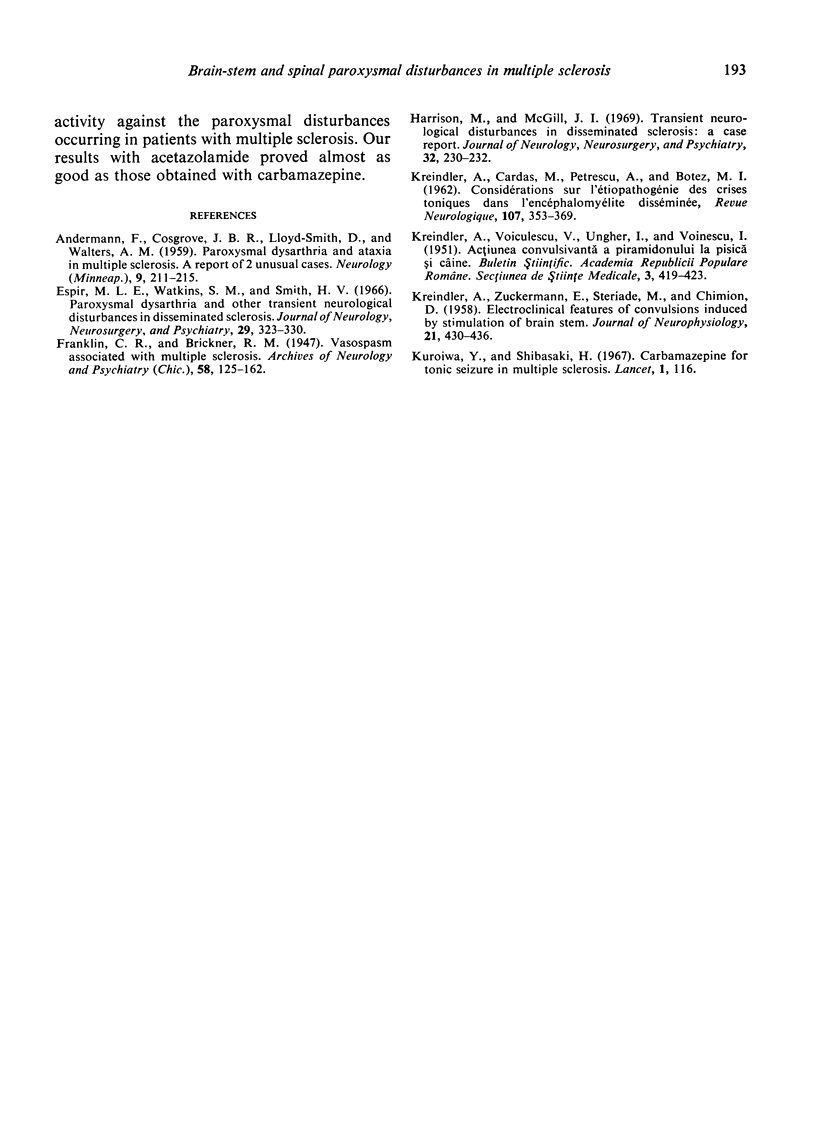Abstract
Nine cases of multiple sclerosis with paroxysmal disorders were treated with acetazolamide. In most cases a brain-stem origin of the seizures was suggested by their particular pattern: crossed syndromes (facial spasm associated with contralateral weakness of the arm and leg, paroxysmal paraesthesiae in one side of the face and weakness of the contralateral leg), paroxysmal dysarthria, and ataxia. One patient with a Brown-Sequard syndrome complained of paroxysmal paraesthesiae in the lower limbs, for which a spinal origin was admitted. In all patients the paroxysmal disorders were promptly suppressed or markedly reduced by acetazolamide.
Full text
PDF


Selected References
These references are in PubMed. This may not be the complete list of references from this article.
- ANDERMANN F., COSGROVE J. B., LLOYD-SMITH D., WALTERS A. M. Paroxysmal dysarthria and ataxia in multiple sclerosis; a report of 2 unusual cases. Neurology. 1959 Apr;9(4):211–215. doi: 10.1212/wnl.9.4.211. [DOI] [PubMed] [Google Scholar]
- Espir M. L., Watkins S. M., Smith H. V. Paroxysmal dysarthria and other transient neurological disturbances in disseminated sclerosis. J Neurol Neurosurg Psychiatry. 1966 Aug;29(4):323–330. doi: 10.1136/jnnp.29.4.323. [DOI] [PMC free article] [PubMed] [Google Scholar]
- Harrison M., McGill J. I. Transient neurological distrubances in disseminated sclerosis: a case report. J Neurol Neurosurg Psychiatry. 1969 Jun;32(3):230–232. doi: 10.1136/jnnp.32.3.230. [DOI] [PMC free article] [PubMed] [Google Scholar]
- KREINDLER A., ZUCKERMANN E., STERIADE M., CHIMION D. Electro-clinical features of convulsions induced by stimulation of brain stem. J Neurophysiol. 1958 Sep;21(5):430–436. doi: 10.1152/jn.1958.21.5.430. [DOI] [PubMed] [Google Scholar]


